Since the discovery of quantum mechanics over the past century, scientists have sought to unify the conflicting laws simultaneously governing the ever-uncertain atomic level and the assured inertial frame of humanity as maintained by Isaac Newton. Phoenix and Los Angeles-based Seffa Klein (b. 1996)’s latest series seeks a similar “theory of everything” to unite her work, featured in Klein’s New York debut”Canvases: where it all belongs” to SFA Advisory until May 31.
Sitting among the exhibition’s eight abstract geometries, made of bismuth, plaster and acrylic on woven glass instead of canvas, Klein said that since she started making conceptual art at age 17 , she remained reluctant to force the work to communicate its process. Instead, Klein said, while surrounded by these radiant textures looming, somehow, even larger than their actual size, the process itself exemplifies the mission of her work: to discover the smallest common denominators of reality.
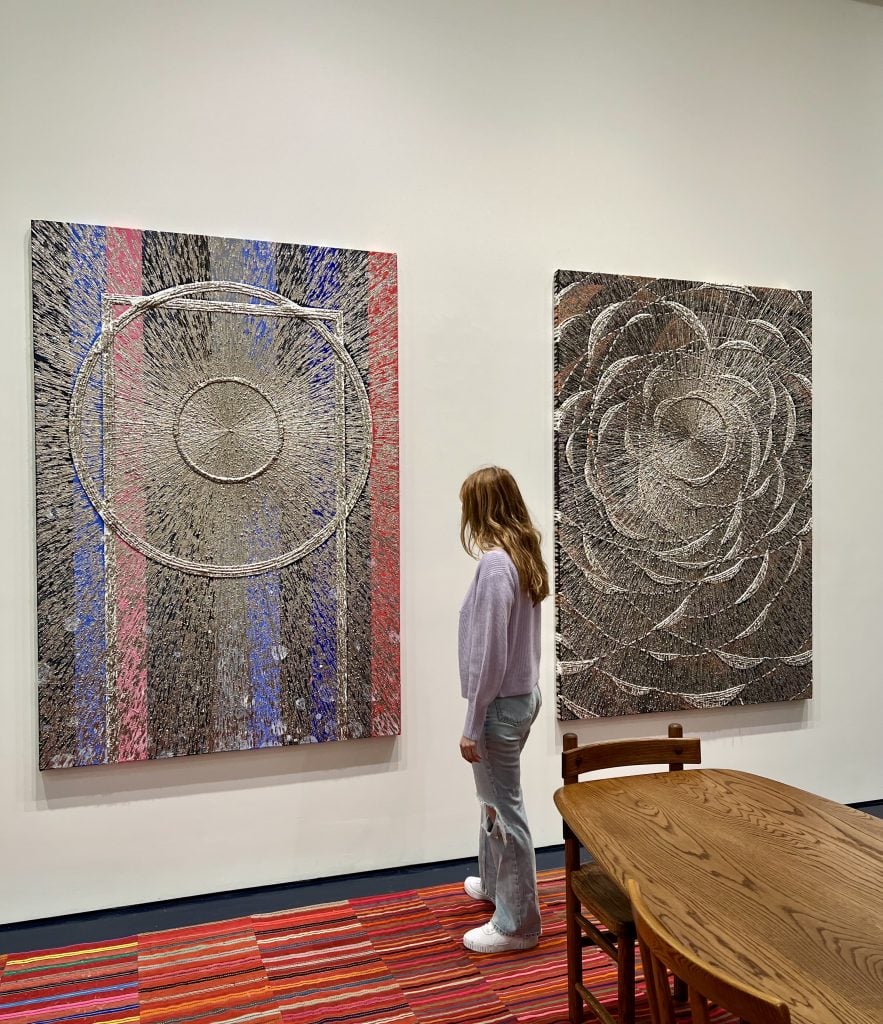
Installation view of Seffa Klein WEB (light acceleration)(2023) and WEB (go to zero) (2023). Courtesy of SFA Advisory.
“Webs” weaves together the many mediums Klein has experimented with over the past decade. This is the first time she has harmonized so many metals and materials in a comprehensive series, accompanied here by six smaller gouache paintings examining fractal patterns in detail throughout this exhibition. “Webs” also marks the first time that Klein has woven so many ideas into a single series, combining her practice of observing the sun with the symbolic languages she has devised to centrifugal meaning itself.
Some threads begin before Klein’s life. She is the granddaughter of French artist Yves Klein, a student of the sublime who dropped thousands of balloons on the streets of Paris to complement his gallery shows and harnessed women as brushes to sign the sky. Living artistically took its toll – Yves Klein died of a heart attack in his thirties, long before he met his granddaughter.
Two decades after Klein’s death, his widow Rotraut Klein and her new husband Daniel Moquay moved from France to Phoenix — most likely, Klein told me, because they wanted to live somewhere warm in America without fear of tremors. earthen. Rich with otherworldly desert landscapes, Old West traditions and ancient native wisdoms, there was a magical vibe then and there too. Moquay went on to manage the Yves Klein archives and operate a French restaurant in Phoenix where Klein’s future mother worked on staff – and met her father, Yves Klein’s biological son. By the time Klein herself was 10, their family had moved to northern Arizona and started a farm which the fledgling artist helped.
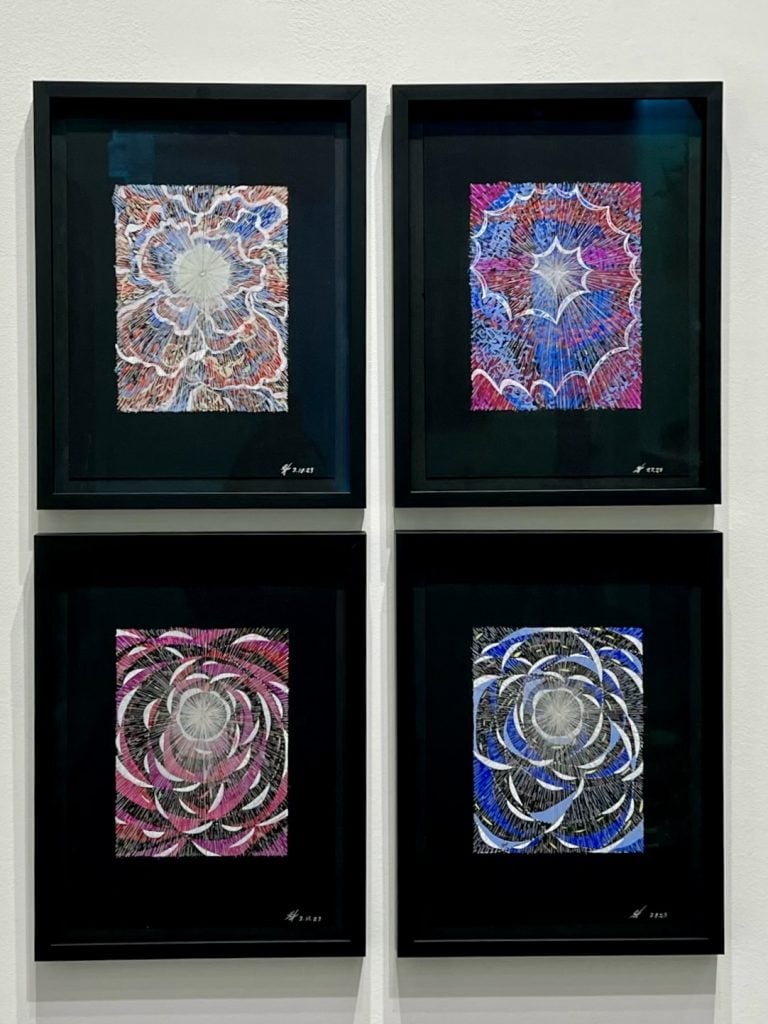
Installation view “Seffa Klein: Webs” at SFA Advisory, 2023. Courtesy of the artist and SFA Advisory.
“I grew up in different ways,” she said. “One of them travels the world, going to all sorts of fancy openings. The other is on a farm, digging and pulling weeds, working hard with my hands in the sun. never dreamed of becoming an artist because she already was one. Instead, Klein planned to be an inventor.
“I was definitely born with it,” Klein continued. “Or it could be epigenetic. I think there is also spiritual genetics that sometimes aligns with physical genetics. Just as his grandfather invented International Klein Blue, Klein’s works are also centered in matter.
At 17, after years of drawing aliens and portraits, Klein turned to mathematical abstractions. She wrote equations for flowers and translated floral hues through them into binary code, decoupling whole numbers from the values we undoubtedly assign to them. She calls these works Fibonacci abstractions. “They feel very 17,” Klein said, “apart from the ternary math.”
“17 deluxe,” I observed. “40 up,” Klein joked, referring to astrological birth charts.
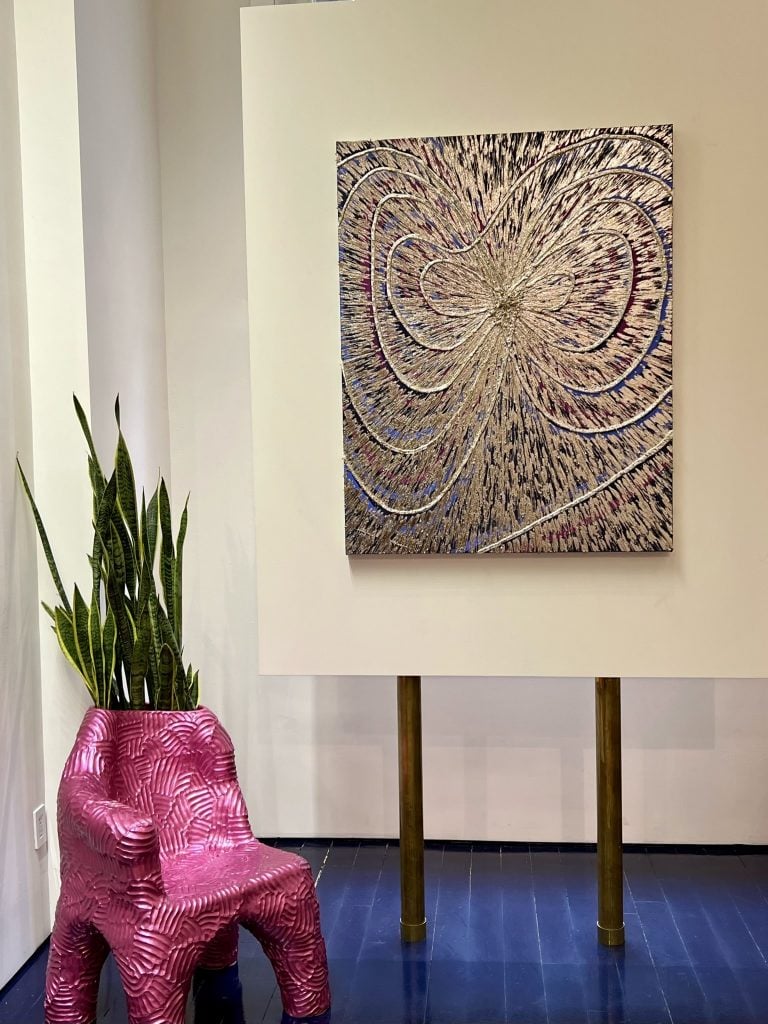
Installation view “Seffa Klein: Webs” at SFA Advisory, 2023. Courtesy of the artist and SFA Advisory.
Klein went to UCLA to study astrophysics and oceanside art. Favoring Will Rogers State Beach between Santa Monica and Malibu, Klein hit a record-breaking 180-day beach streak during the pandemic, continuing his 15-year practice of sunwatching — recharging himself energetically by watching the sun at sunrise or sunset. from the sun “when the UV rays are scattered on the horizon,” she said.
In college, Klein created “amorphous” forms of thickly layered plaster over a constructed armature which she then sculpted, uncovering the colors beneath. “It was about creative destruction,” she said, “hiding things from me to find out.” In paradoxes like these, where the mind must split to encompass opposing forces, Klein and others see a portal to truth.
Around his graduation in 2017, Klein discovered gallium metal, a non-toxic facsimile of lead that melts at human body temperature. It is used in certain medical analyses. Using the molecular wetting process, the same once used to make silver mirrors, she painted intricate metallic patterns onto glass. The process proved shaky and left Klein yearning for color.
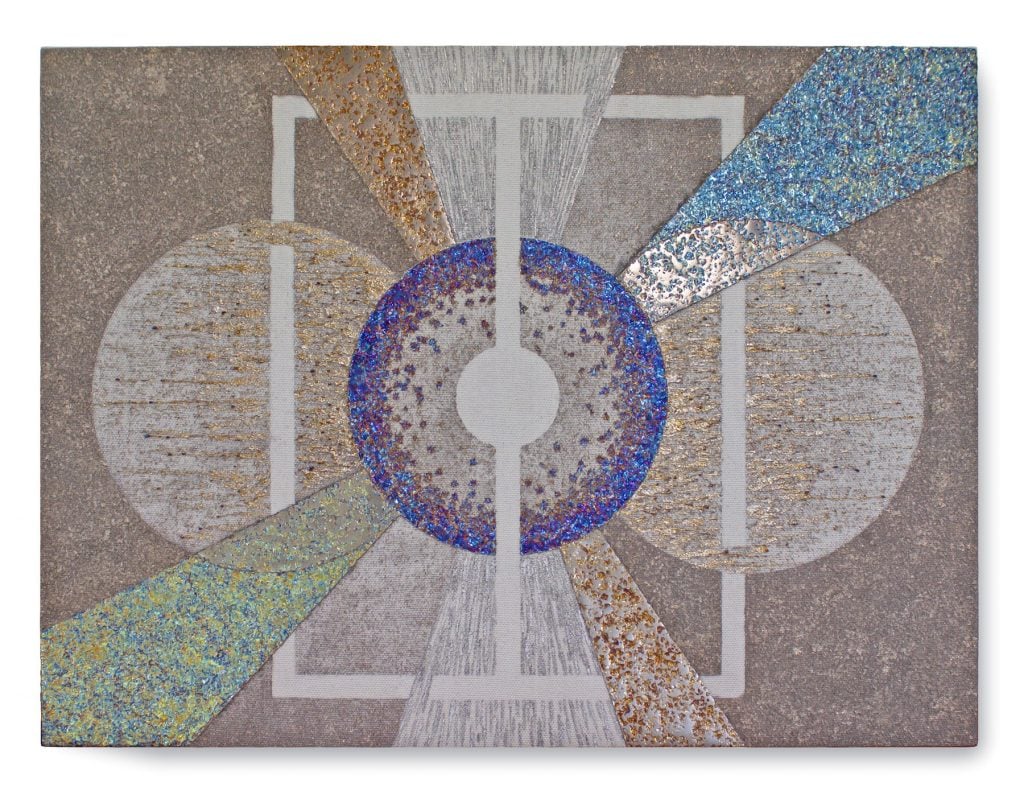
Seffa Klein, New feed (2019). Courtesy of the artist.
Then she found bismuth – bright, safe to melt without a smelter, and from collisions between neutron stars. “All heavy metals are created during these high-energy events,” Klein noted. “These are explosive and intense materials.” Rarer than gold, Klein then concentrated the full spectrum of bismuth’s opalescent colors in a series called Theory of Multiple Displacements – compositions where flat shapes act as a language to convey how earth, sky and humans interact. .
She noticed that similar geometries persist in the “Webs”, sculpted instead with impasto plaster outlines that interlock and intertwine so that neither prevails over the visual hierarchy except, perhaps, the shimmering solidified bismuth that coats the top. The butterfly shapes appear elsewhere to honor the butterfly effect, the principle of apparent chance that prohibits mankind from predicting the weather for the past ten days at present, discovered by MIT physicist Ed Lorenz in 1963.
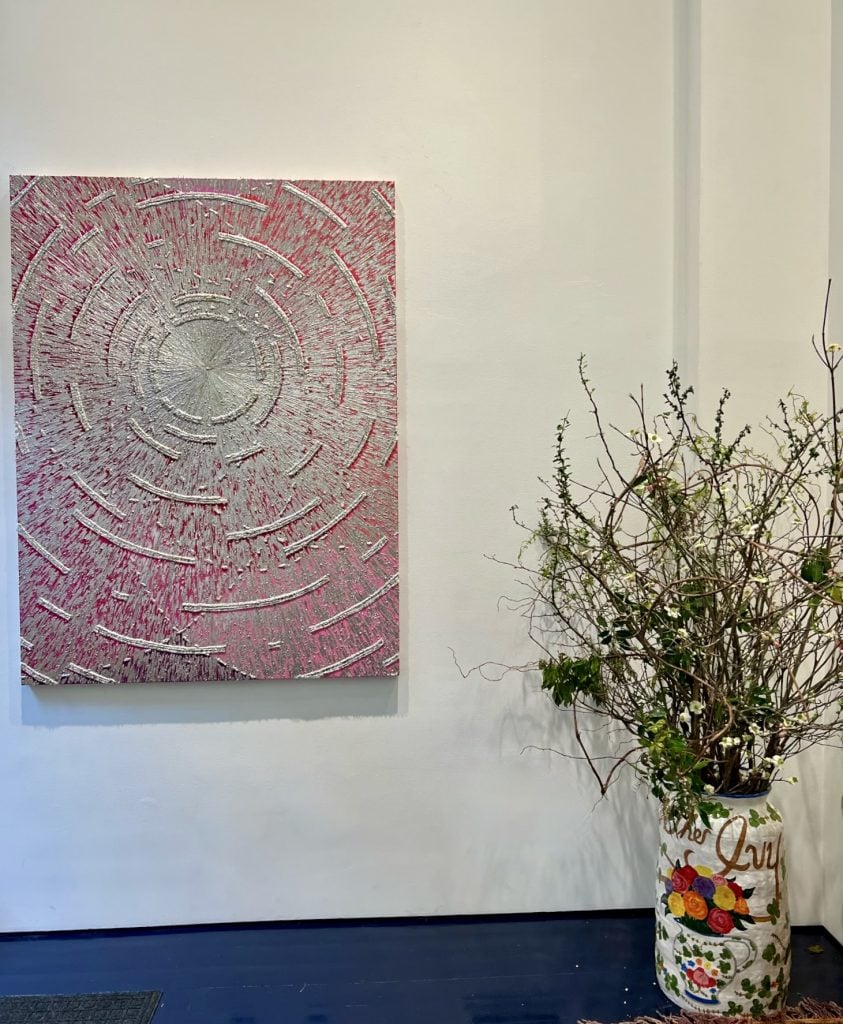
Installation view of Seffa Klein WEB (diagram)(2023). Installation view. Courtesy of SFA Advisory.
Or maybe it’s all just random for us ants on the carpet. “The gaze is my metaphor for your ability to structure your own awareness via your attention,” Klein said. “These pieces are about the ability to see that everything in the universe is ordered, that chaos is an illusion on our scale.”
Rather than oxygenate the bismuth to provoke its hues, Klein lets the material act like a drawing here. Acrylic paint, a new addition, brings color from the base of each work, inspired by seaside sunsets and pearly shellfish. The changing shapes and colors evoke varying shades of the same transcendental state achieved by ordering the mind through the gaze – learning to wield both as tools and wrapping one’s brain around concepts like quantum physics, which may not sound familiar but are still relevant, because really everything is made of electrons.
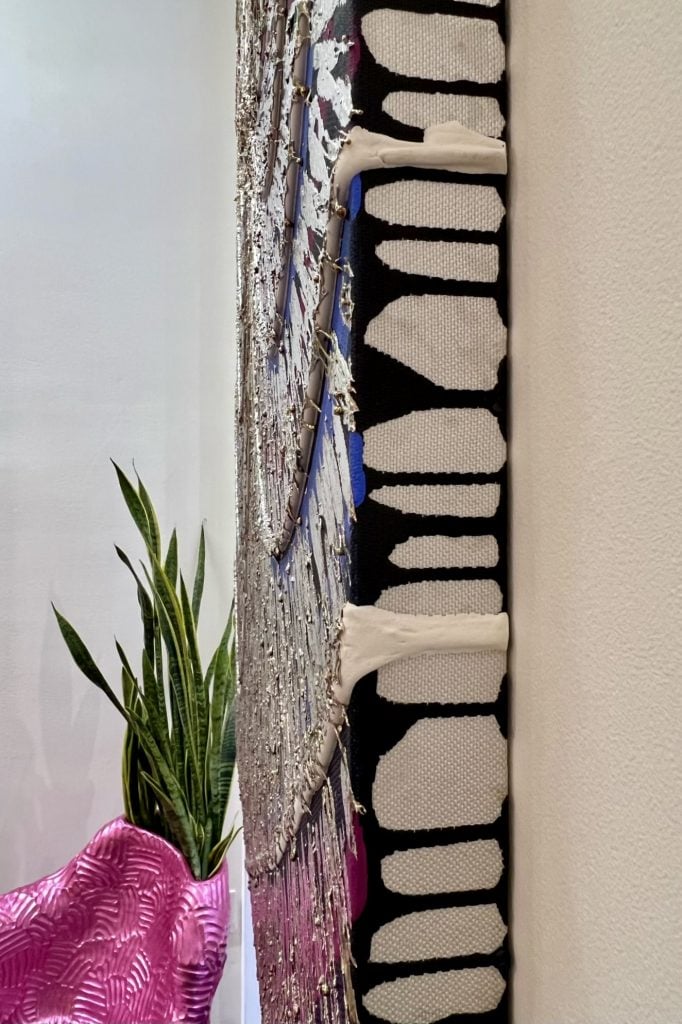
Detail of Seffa Klein WEB (Because 4,5,6)(2023). Detailed installation view, courtesy of SFA Advisory.
Some shades are as intense as Klein’s own gaze – take Web (light acceleration)compared to Web (like a sunflower). “I think when you access something deep, it’s always kind of scary,” Klein said, echoing previous feelings on the very meaning of “impressive”. Later, she added, “Every time you move to the next state of consciousness, there is a death from the lower state of consciousness.” Certain works, perhaps all of them if you need them, are an invitation to this death.
Klein is hardly intimidated by her devotion to discovering reality itself. Everything in the universe better be known, she joked, or it’s “gonna kick the universe’s ass.” Yet the process, the journey, is the point. “Meaning inherently exists everywhere,” Klein said. “To focus one’s attention on finding the nature of life is the meaning.” It all starts with the look.
Follow Artnet News on Facebook:
Want to stay one step ahead of the art world? Subscribe to our newsletter to receive breaking news, revealing interviews and incisive reviews that move the conversation forward.
